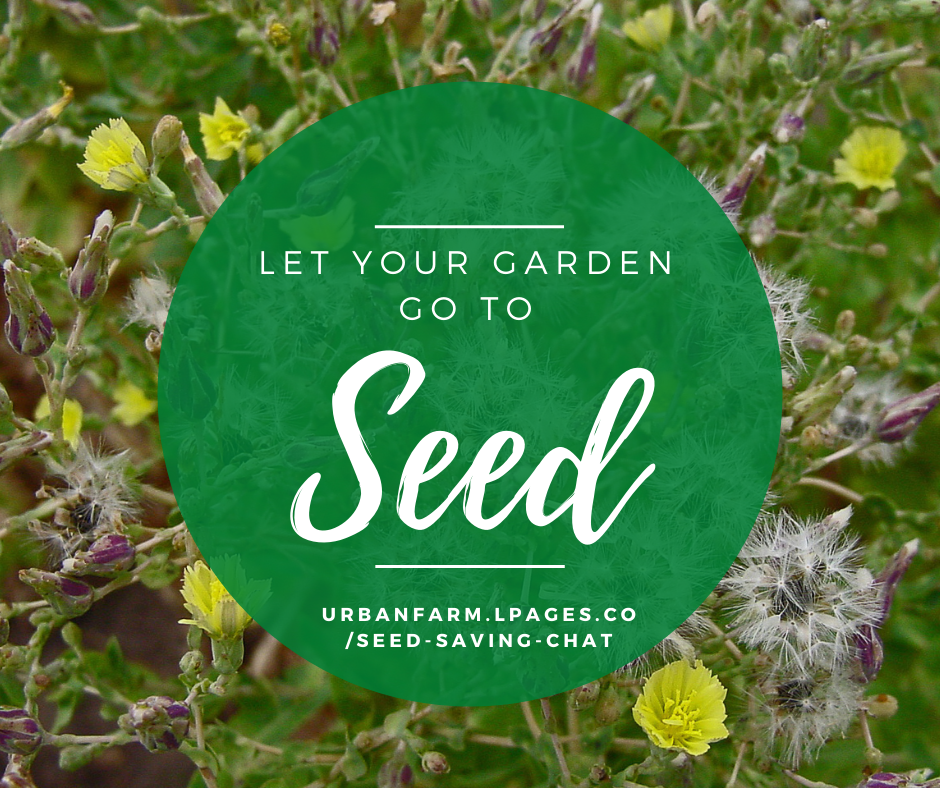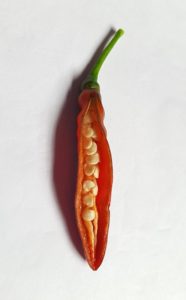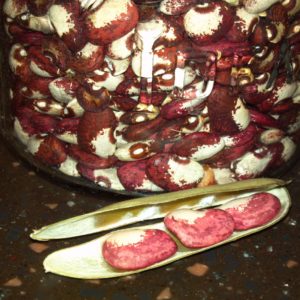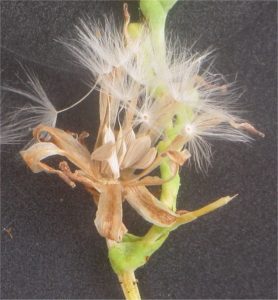Seed Saving Blog

Let Your Garden Go to Seed
On Tuesday, August 24th, join us at 5pm Pacific for Seed Chat. This month, Bill McDorman and Greg Peterson will discuss how to select and save the best seeds from your garden so that your plants get better and stronger from year to year. Sign up at UrbanFarm.lpages.co/seed-saving-chat/. Bill and Greg will answer your most pressing seed questions and inspire you to save your own seeds.
Seed saving is one of the most powerful skills that anyone can practice.
Seeds you grow are free and they become adapted to your garden’s microclimate over time. If you have never saved seeds before, now is a great time to learn how. Here are some tips:
Some crops like peas, beans, peppers, lettuce, and tomatoes are great for beginning seed savers. These trusty crops are reliable and prolific seed producers. They are also self-pollinating, so you don’t have to worry about them crossing with their neighbors (more about that later.)
Sacrifice a Few Heads or Pods for Seed Saving
Harvest most of your lettuce heads before they begin to flower, leaving a few of the plants in the garden to bolt (another word for flowering.) A stalk will form, producing flowers that look like small dandelions. When white fluff emerges, tug at it gently to see if it separates easily from the flower. If it does, shake the flower head into a bag to collect the seeds. Not all seeds will mature at the same time, so repeat the process daily until the majority are collected.
Harvest beans and peas when the seeds inside the pod are plump, but not quite full size. After harvesting, let them dry completely before storing. Some bean varieties can be left on the vine to dry until the beans rattle. Check online to find out if the varieties that you grow should be harvested before or after they dry on the pod.
When they are ripe, harvest tomatoes and peppers. Separate the edible flesh from the seeds that you want to save. Clean the seeds and let them dry out before storing.
Collect Seeds From Your ‘Best’ Plants

Commercial seed producers carefully monitor growing conditions to keep them as close to ideal as possible. These conditions are difficult to maintain in a home garden. So, rather than continuing to grow plants that are adapted to ideal conditions, we can cultivate our own seeds that thrive in our individual microclimates and gardening practices. You’ll naturally get this over time if you save seeds at home.
Tomatoes and Peppers Require No Sacrifice
Collect seeds from healthy specimens that produced a bountiful harvest. You might also select for good flavor, appealing texture, desired size or any other criteria that you choose. Over time, seeds will adapt more and more to your garden conditions and preferences.
 Let Nature Do the Work
Let Nature Do the Work
Many leafy greens and herbs readily plant their own seeds. You can test this out by leaving some seeding plants in place to allow seeds to naturally fall to the ground. Some of those seeds will plant themselves without any assistance. Self-sown plants are often stronger, more vigorous plants as they have determined the best site for germination and growth. Give it a try with arugula, chamomile, parsley, cilantro, lettuce and leeks.
Don’t Stress About Keeping Seeds “Pure”
In commercial farming, growing uniform produce often entails monoculture agriculture (growing only a single plant variety.) In our home gardens, we have a lot more flexibility to let plants to interbreed. Allowing similar varieties of the same species to cross sometimes results in undesirable changes, such as poor flavor or less resistance to disease. Other times, the difference is positive, resulting in plants that perform even better than their parents.
In any case, having a diverse mix of genes is advantageous because it increases the number of genetic possibilities. A larger genetic pool means more resilience and more outcomes. Many gardeners allow similar varieties to cross in order to save seeds from offspring that express desirable traits. By doing so, they seize upon a marvelous opportunity to direct and accelerate the way these varieties evolve in their gardens.
Discover more about seeds by dropping in for Seed Chat on the third Tuesday of the month. New seed saving and food growing topics are addressed live each month. Receive topic updates and sign up to attend at UrbanFarm.lpages.co/seed-saving-chat/.
Lettuce photo: By Rasbak – Own work, CC BY-SA 3.0, https://commons.wikimedia.org/w/index.php?curid=974775
Pepper photo: By Plague – Own work, CC BY-SA 4.0, https://commons.wikimedia.org/w/index.php?curid=95182384
Recent Posts
- 2023 SEED LIST – Phoenix Seed Up Event October 27-28
- Seed Resources: Navigating the Abundance of Knowledge
- Seed List for the Phoenix Seed Up Event November 4-5, 2022
- Your Personal Seed Bank: Doomsday Vault or Your Best Shot at an Abundant Future?
- What is the Great American Seed Up??
- HOME GARDENERS FACE SEED SHORTAGES
- What In the World is Happening with Grain?
- Grains in Gardens & Other Skills to Learn & Share
